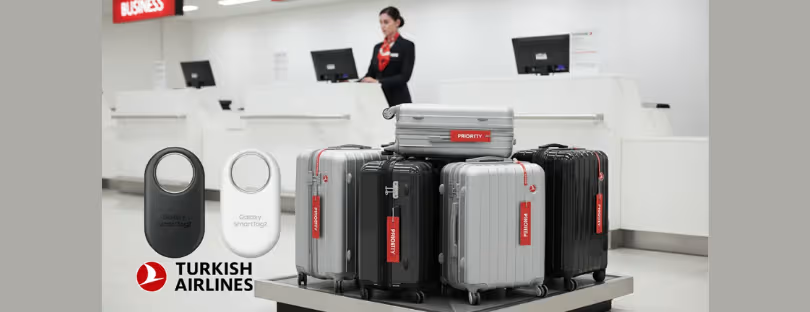
Check-In in 70 Seconds: TSA Airport Partners with SITA for Smart Travel Future
Passengers departing from Taipei Songshan Airport (TSA) will soon benefit from a lightning-fast, fully streamlined check-in experience thanks to SITA technology. The airport has selected SITA to lead its next-generation shared check-in counter project, deploying a full suite of self-service and biometric-powered tech to future-proof operations and keep passenger satisfaction high.
SITA’s Flex platform and Smart Path check-in kiosks will be available to all airlines operating from TSA’s international terminal thanks to a common-use self-service model. Flex allows unprecedented adaptability, giving passengers the power to check in to their flight using their mobile phone, untethered from physical counters. Biometric-powered SITA Smart Path kiosks speed up this process even more, allowing passengers to link their ID to their facial biometrics to secure their boarding passes.
TSA will round off the upgraded check-in experience with SITA Self Bag Drop. Proven to accelerate processing time by up to 80%, SITA Self Bag Drop is the global gold standard in baggage solutions for speed, efficiency, and innovation. Integrated with biometric authentication on SITA Smart Path kiosks, the entire bag drop process can be completed in as little as 70 seconds, through an intuitive system requiring minimal assistance from airline agents. This drastically reduces wait times, congestion, and staff workload.
Smarter Travel Through Automation and Real-Time Data
Travelers will gain greater control over their travel, avoiding lengthy queues at the counter, and airlines will be empowered to optimize the allocation of agents and counter space for more complex tasks.
Complementing these systems will be the SITA Maestro Departure Control System (DCS), which automates airline check-in and boarding operations and ensures full continuity in the event of any unforeseen network disruptions. Airline and airport teams also gain new operational insights thanks to data analytics and real-time information sharing, further boosting agility to respond to passenger needs.
Sumesh Patel, President for Asia Pacific at SITA, commented, “Emerging from the COVID-19 pandemic, the Asia Pacific region has seen a hugely invigorating domestic travel boom. This year, passenger numbers in the region are expected to grow by 7.9%, the highest rate globally. How do airports cope with such a significant increase without the ability to expand physically?
The solution lies in smart tech that helps them move passengers through the terminal with unprecedented speed and efficiency. That’s exactly what we’re delivering at TSA. All our solutions boast modular, flexible design, meaning our technology will grow with TSA and its airlines, constantly adapting to passenger requirements and ensuring the airport has the tools to support anything the future holds.”
The rollout of all SITA technologies is expected to be completed by the end of 2025. All systems adhere to the latest international standards, ensuring compatibility and seamless integration with existing airline systems.
Final Thoughts about Taipei Songshan Airport check-in
The transformation at Taipei Songshan Airport isn’t happening in a vacuum—it mirrors a growing global trend where mid-sized airports leapfrog legacy infrastructure by adopting modular, cloud-based, and biometric-driven systems. Airports like Kansai in Japan, Bangalore in India, and even regional hubs in Europe, such as Lyon-Saint Exupéry, are already deploying similar smart technologies to scale operations without physically expanding. The driving force behind this shift is twofold: post-pandemic recovery pressures and surging passenger expectations for seamless, contactless experiences.
SITA’s deployment at TSA reflects a broader move toward “invisible travel”—a concept where passengers pass through checkpoints with minimal interruption, guided more by technology than traditional human processes. This evolution isn’t just about speed; it’s about control, personalization, and scalability. As traveler volumes across the Asia Pacific grow at a record pace, especially driven by short-haul and intra-regional demand, airports must think digitally rather than spatially.
TSA’s decision to future-proof its operations with flexible, interoperable systems puts it in a strong position to adapt as airline models, traveler behavior, and international security standards continue to evolve. More importantly, it signals that smart airport upgrades are no longer a luxury for large global hubs—they are becoming essential infrastructure for airports of all sizes in a hyper-connected travel landscape.










